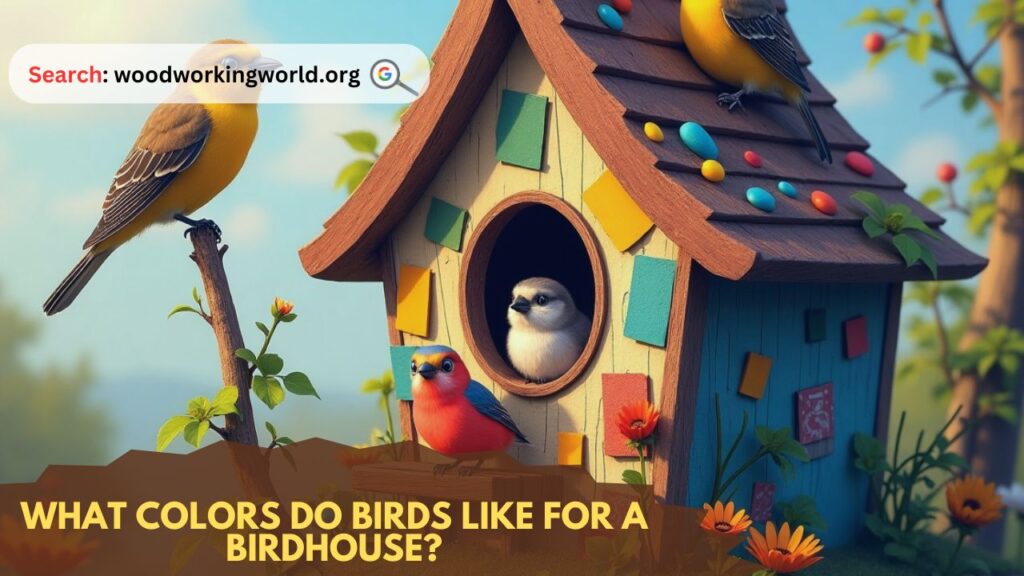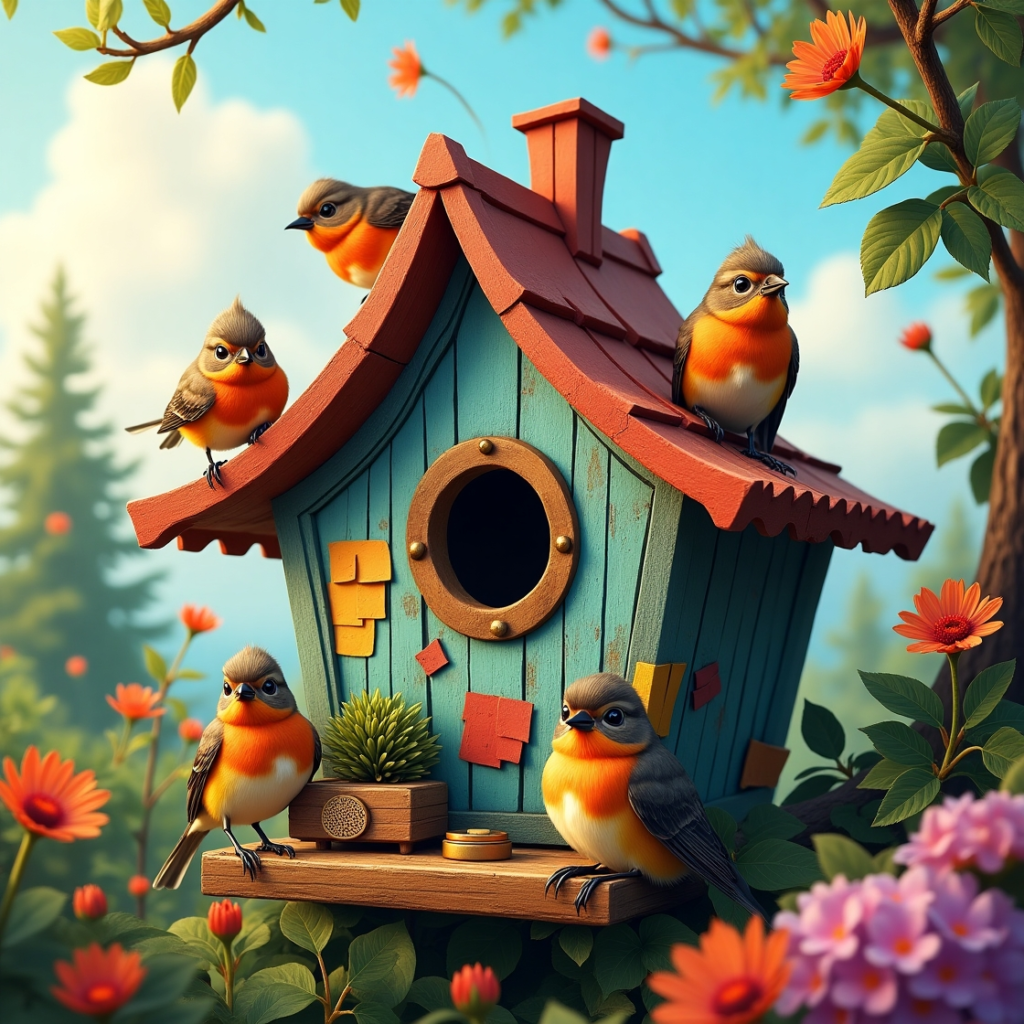What Colors Do Birds Like for a Birdhouse?
When it comes to selecting the right color for your birdhouse, aesthetics are just one part of the equation. Birds rely on visual cues, and the color of a birdhouse can influence their decision to nest, feed, or avoid a specific area altogether. Understanding which colors attract birds and why can help you create a more inviting environment for your feathered friends.
This comprehensive guide explores the science behind bird color preferences, provides recommendations for choosing the best hues, and offers practical tips for painting birdhouses safely.

Why Color Matters for Birds
Birds have excellent color vision, often superior to that of humans. They can see ultraviolet (UV) light, which is invisible to us. This heightened color perception affects how they interact with their environment, including their choice of nesting sites.
Factors Influencing Color Preferences
- Camouflage: Birds prefer colors that blend into their natural surroundings to avoid predators.
- Attraction: Bright and vibrant colors can attract certain species, especially during the breeding season.
- Temperature Regulation: Dark colors absorb more heat, which can affect the internal temperature of a birdhouse.
Quote: “Choosing the right color for a birdhouse not only enhances your garden’s beauty but also provides a safe and appealing home for birds.”
Best Colors for Birdhouses by Environment
To choose the right color, consider the natural landscape where the birdhouse will be placed:
1. Woodland Areas
- Recommended Colors: Browns, dark greens, and earthy tones
- Reason: These colors blend well with trees and foliage, providing camouflage.
2. Open Fields or Grasslands
- Recommended Colors: Light greens, tans, and soft yellows
- Reason: These shades mimic natural grasses and wildflowers.
3. Urban or Suburban Settings
- Recommended Colors: Neutral tones like beige, gray, and white
- Reason: These colors blend with modern architecture and garden decor.
4. Coastal or Beach Areas
- Recommended Colors: Light blues, sandy tans, and whites
- Reason: These colors reflect the natural hues of the beach and ocean.
Start Your Next Project With Teds’ Archive Of 16,000 Plans!
Instant access to all 16,000 woodworking plans with step-by-step details, photos, materials lists and more
Monthly free plans with lifetime membership access – No renewals, recurring fees or other charges


Bird Color Preferences by Species
| Bird Species | Preferred Colors | Notes |
|---|---|---|
| Bluebirds | Light blue, soft beige | Attracted to colors matching sky |
| Wrens | Brown, green | Prefer earthy, camouflaged tones |
| Chickadees | White, light gray | Neutral tones for nesting sites |
| Cardinals | Dark green, brown | Blend well with dense foliage |
| Goldfinches | Bright yellow, light green | Vibrant colors match their plumage |
| Woodpeckers | Dark brown, red | Prefer natural wood tones |
| Hummingbirds | Red, pink | Attracted to bright floral colors |
Colors to Avoid for Birdhouses
While some colors are attractive to birds, others can have negative effects:
1. Black and Dark Colors
- Reason: Absorb heat, making the birdhouse interior too hot during summer.
2. Bright Whites
- Reason: Highly visible to predators and may deter nesting.
3. Metallic and Glossy Finishes
- Reason: Can create glare and look unnatural to birds.
4. Neon and Fluorescent Colors
- Reason: Unnatural hues that may confuse or deter birds.
Tips for Painting a Birdhouse
1. Use Non-Toxic Paints
- Choose water-based, non-toxic paints that are safe for wildlife.
2. Avoid Painting the Interior
- Leave the inside of the birdhouse unpainted to maintain a natural and safe environment.
3. Apply a Matte Finish
- Opt for matte or satin finishes to reduce glare.
4. Weatherproof the Exterior
- Use a non-toxic, clear sealant to protect the paint from the elements.
5. Allow Proper Drying Time
- Let the paint cure fully before placing the birdhouse outdoors.
Tip: Regular maintenance, including touch-ups and cleaning, will extend the life of your birdhouse.

FAQs
1. Can I paint my birdhouse red to attract hummingbirds?
Yes, hummingbirds are attracted to red hues. However, ensure the paint is non-toxic and avoid glossy finishes.
2. Should I match the birdhouse color to my garden decor?
While aesthetics are important, prioritize colors that blend with the natural environment to attract birds.
3. How often should I repaint a birdhouse?
Repaint every 2 to 3 years or as needed to maintain weatherproofing and appearance.
4. Is it better to leave a birdhouse unpainted?
Natural wood can be attractive to birds, but painting can extend the life of the birdhouse and provide camouflage.
5. Can I use leftover house paint for a birdhouse?
Only if it is water-based and non-toxic. Avoid paints with harmful chemicals.
Conclusion
Selecting the right color for your birdhouse is about balancing aesthetics with functionality and bird preferences. By understanding how birds perceive color and following best practices for painting and maintenance, you can create a vibrant and inviting habitat. Whether you choose earthy tones for camouflage or vibrant hues to attract specific species, your thoughtfully designed birdhouse will be a welcome addition to any garden or outdoor space.